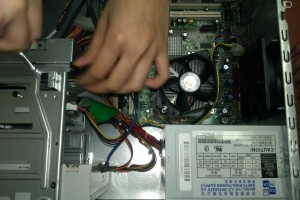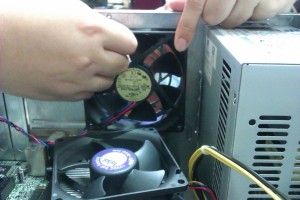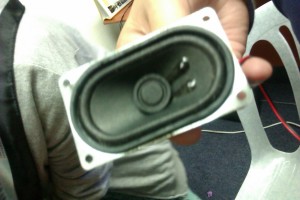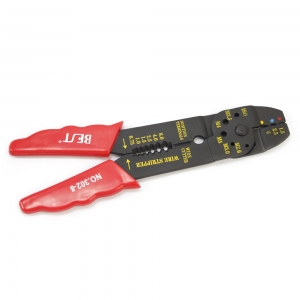Today we were asked to uninstall and install back all the hardware in the PC except for the motherboard and power supply which counts as practical in Hardware technology. With the help of the tool kits we were able to unscrew the PC easily and with that we were able to know more how the internal of PC looks like.. There some pictures that had been taken while we uninstall and installing the hardware where we somehow find it confusing when it comes to wiring part.
Before proceeding with the Hardware or components pictures or images inside the PC, I would like to introduce you our Hardware Technology Group, named Bb’s and our partners name are Nor Suaidah, Zawani, Nur Farhana and me myself Hazwani Adilah.

Here are the pictures or images that have been captured using our hand-phone camera during the assembling and disassembling the components or hardware in the PC.

This is tool kits or PC tools that are used to disassembling and assembling the Hardware Component in the PC.
First thing first, we were given a PC in a group of 5 where 4 people in each group. We were told by our instructor to dissemble the PC except for the power supply and motherboard. The PC given was HP brand and Windows Vista.

Steps on how to disassemble a computer
-
The first thing you do, is unplug every cable that’s plugged in to your computer.
- Now that your computer is fully unplugged, move your PC to a clean work space, preferably a carpet. The carpet is better than tile, because screws and other small parts will roll around.
- Remove outer Shell/Casing
- Now that the case is off, begin to remove the internal components which is system fan. Remove the CPU fan.
- Unscrew the power supply.
- Unscrew or disassemble DVD or CD Drive.
- Remove or unscrew the Card reader (Available in new computer)
- Remove the hard Disk Drive.
- Remove the Expansion Card slots.
- Remove the Connectivity Center Cables
- Remove RAM (Random Access Memory)
- Remove Power Button & Power LED + HDD LED
- Remove the Connectivity Center
- Remove Motherboard.
Those steps mentioned above are the supposedly or proper way on how to disassemble all the hardware or components in a Computer. However, due to lack of components inside the PC, we were able to disassemble only the necessary components that was directed by our instructor.
Disassembling
The first thing to do is we open the container of the PC and the internal of the PC look like the picture below.

After that, we did the disassembling all the hardware which have been direct by our instructor and all the hardware that we have uninstall are such as Hard Disk Drive, Floppy Disk, CPU Fan, Cooling Fan, Speaker, CD Rom Player and USB ports.



Next, we will show you our group while they disassembling and installing back all the hardware to its position earlier.


First this picture above shows that we was disassembling the Hard Disk Drive using PC tools provided by the instructor.


Next, the above picture is showing you that we were trying to disassemble the DVD Rom and the second pictures is how the DVD Rom of the Hardware in the PC look like.



Followed by the above pictures shown, it shows that the cooling fan was uninstall from the PC.


On the other hand, this is the USB Port and the the audio entertainment from the front side of the PC.


This is where the speaker from the PC was disassemble and it looks like the second picture been post here.


However, this are the images where we have disassemble the CPU fan.

This is where the floppy disk were taken out from the PC.
From this, we have completed disassembling all the components or hardware inside the PC, with that we had to assemble back all the components that have been disassemble from its position earlier. Overall we managed to complete the assembling and disassembling the components in the PC.
![IMG_0600[1]](https://waneyhcsb.files.wordpress.com/2012/05/img_060011.jpg?w=300&h=225)
![IMG_0602[1]](https://waneyhcsb.files.wordpress.com/2012/05/img_06021.jpg?w=300&h=225)
![IMG_0606[1]](https://waneyhcsb.files.wordpress.com/2012/05/img_06061.jpg?w=300&h=225)
![IMG_0609[1]](https://waneyhcsb.files.wordpress.com/2012/05/img_06091.jpg?w=300&h=225)






































